favourite kitchens
Your favorite kitchens at a glance. Get inspired!
Your favorite kitchens at a glance. Get inspired!
Matt, stainless-steel-effect cabinet handles – or perhaps even gold or black? Strip handles or no handles at all? There are endless options when it comes to designing a kitchen.
Similar to the decision to go with a matt or high-gloss finish for your kitchen cabinets, there is also a wide selection of cabinet handles with different looks, such as matt stainless steel – and each type of handle fits perfectly with different styles of kitchen. Of course, you could also opt for a handle-free kitchen, with a variety of solutions to choose from.
We’ve pulled everything you need to know about cabinet handles and handle-free kitchen solutions together for you here. That way, you can see which type of cabinet handles suit you best – or decide to go for a handle-free kitchen instead.

Cabinet handles – or not? Deciding to go for stainless-steel effect kitchen cabinet and drawer handles – or something else entirely – primarily depends on your personal tastes, aesthetic preferences and practical aspects. To allow you to make the best possible decision, it’s important to gather sufficient information beforehand. What are the different choices and designs? What are the pros and cons of a kitchen with cabinet handles, and of one without? After all, your new kitchen will be with you for a good number of years.
There are a multitude of handles in different styles, and these have their own aesthetics and practical features.
These round handles are a popular choice for kitchen cabinets and drawers. They are classic and timeless, and go well with both traditional and rustic-style kitchens.
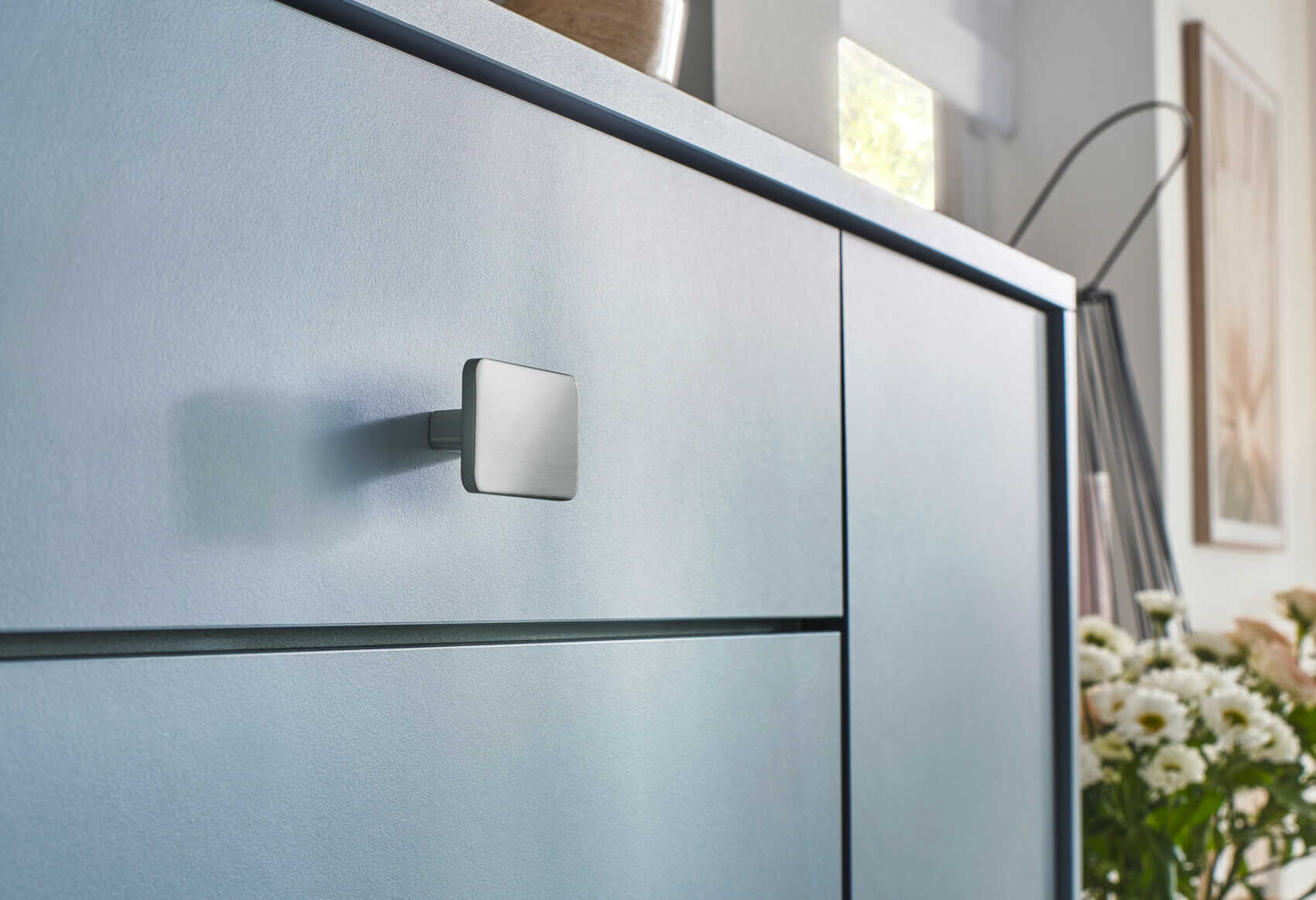
D-handles are straight or gently curved handles that are fixed along the edge of the door. They are a versatile option and go well with different design styles – from modern to industrial.
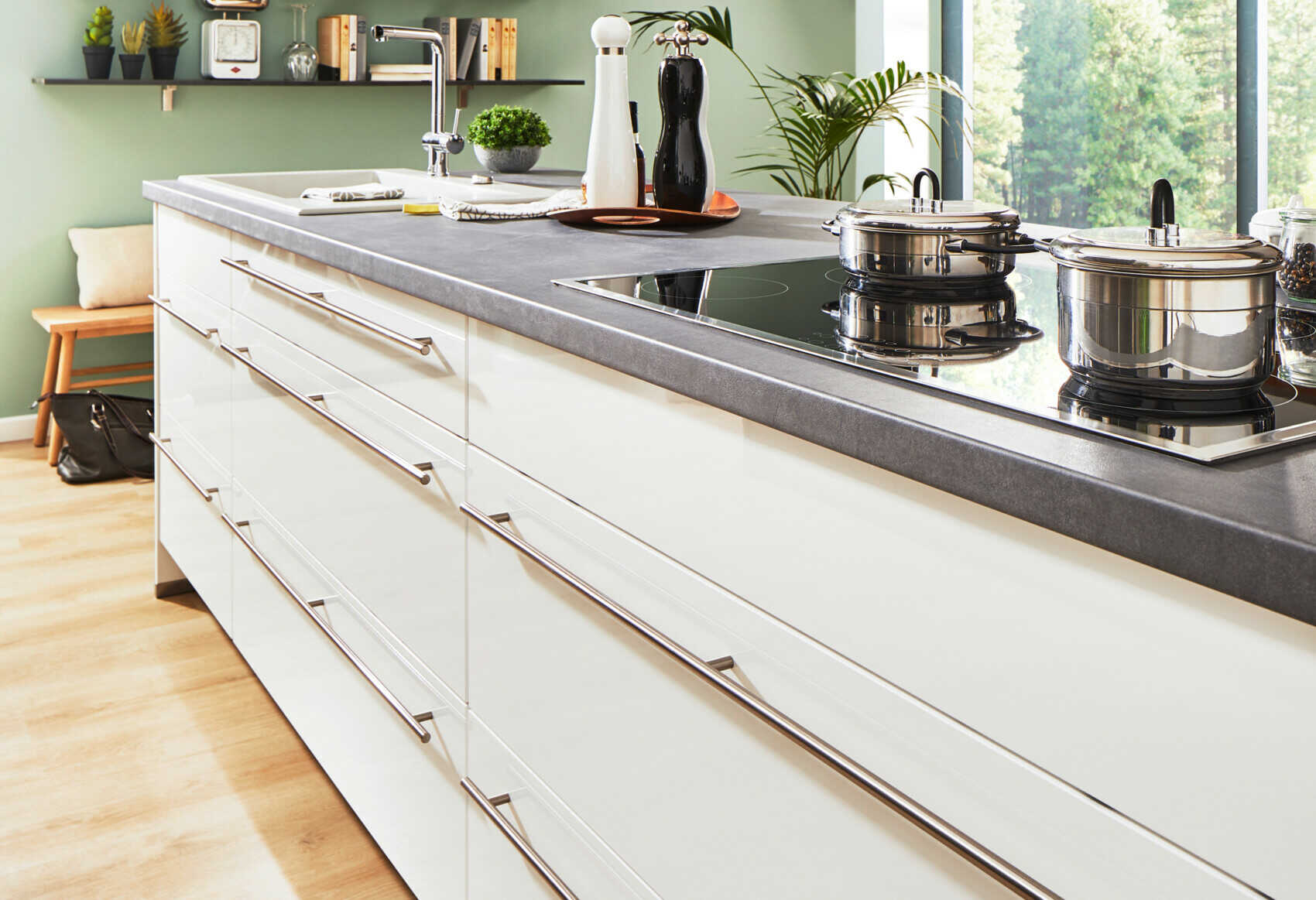
These handles have a curved shape, which results in slightly more elegant, softer aesthetics. They go well with traditional and classic kitchen designs.
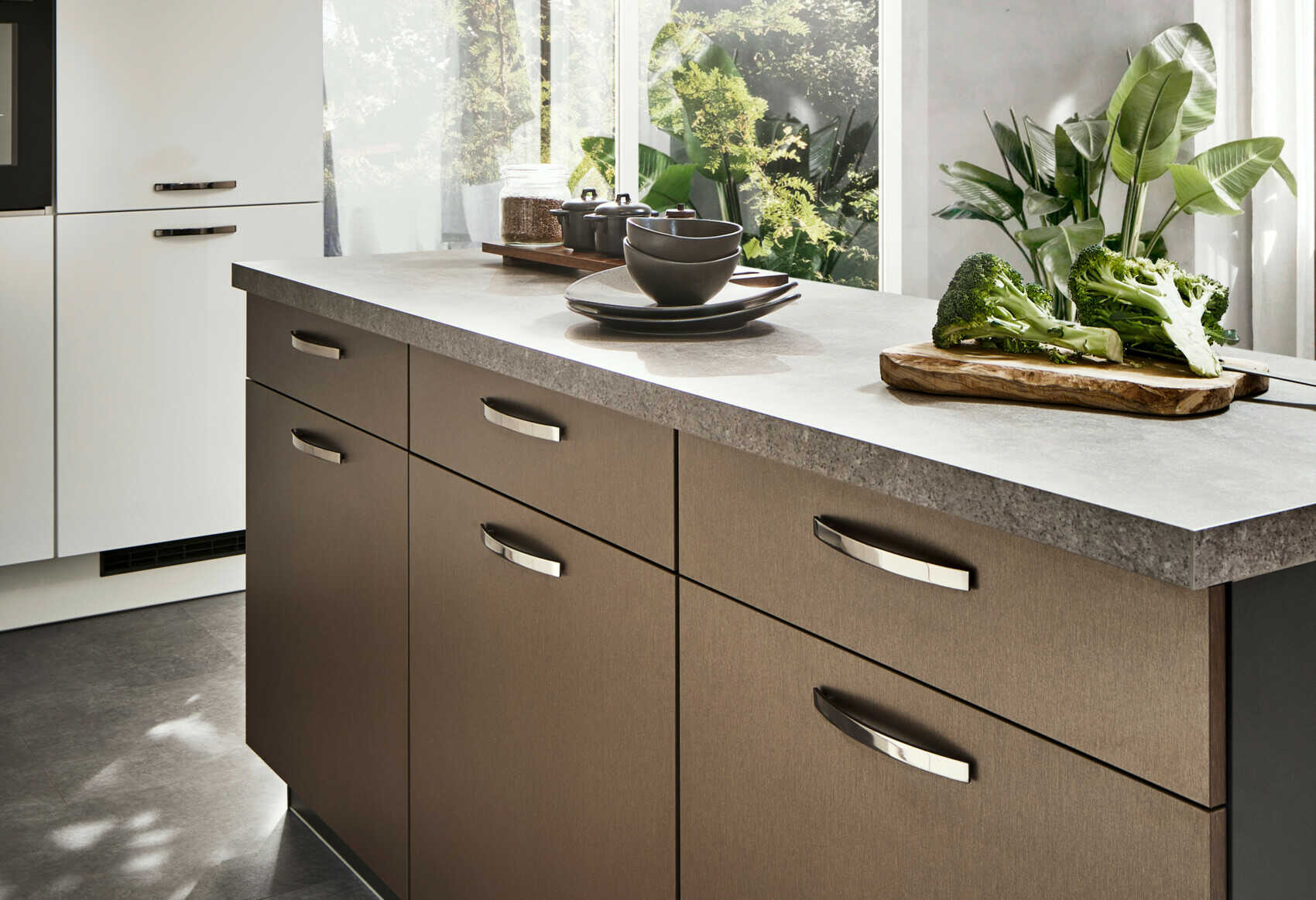
These handles add a gentle curve to a straight D-handle – in other words, it’s the classic style with a modern twist.
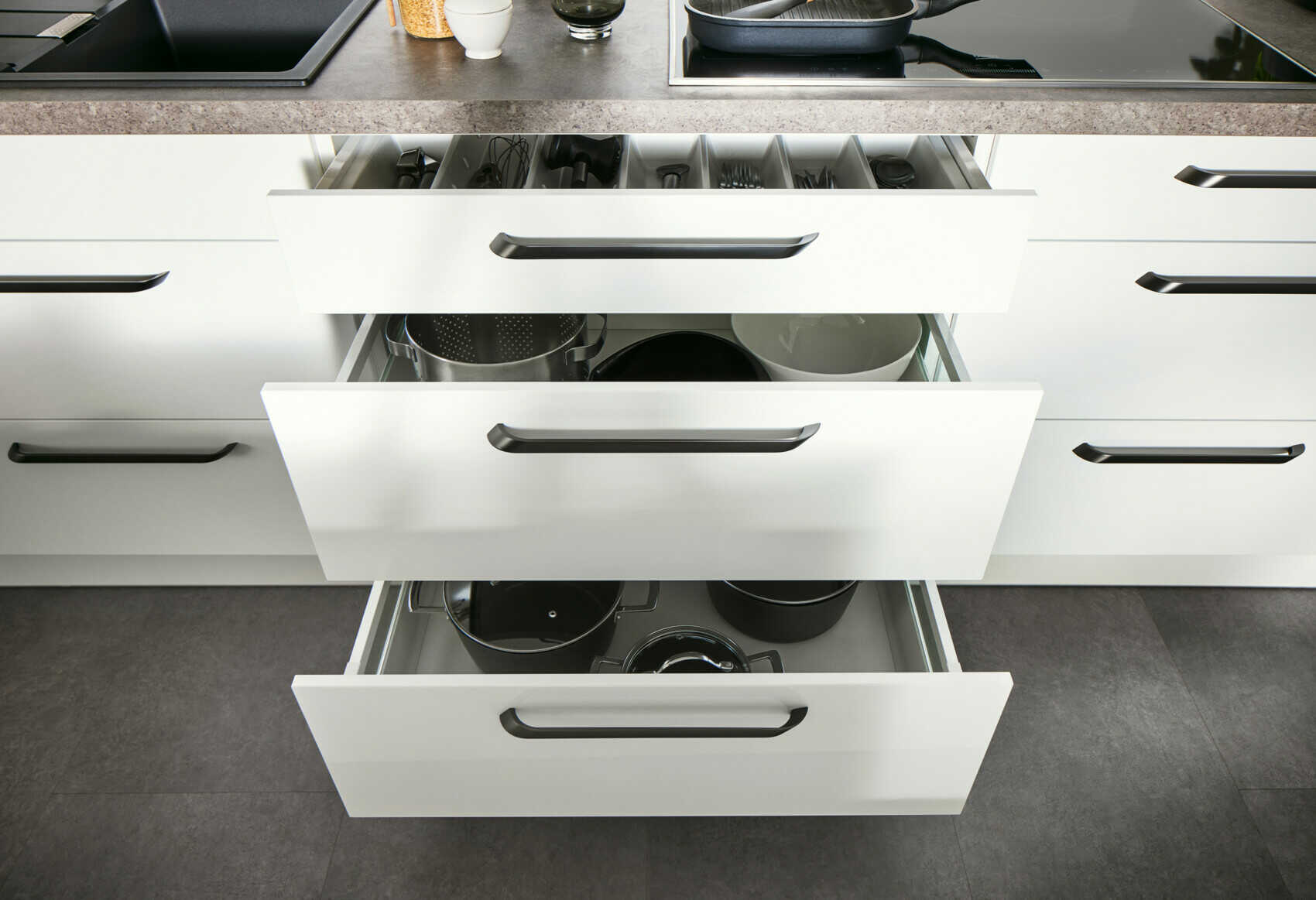
Recessed handles are hollows carved out of cabinet doors and drawer fronts. They are a discreet handle solution and help create a clean, seamless design. These are a good option for anyone looking to combine the aesthetics of a handle-free kitchen with the convenience of handles.
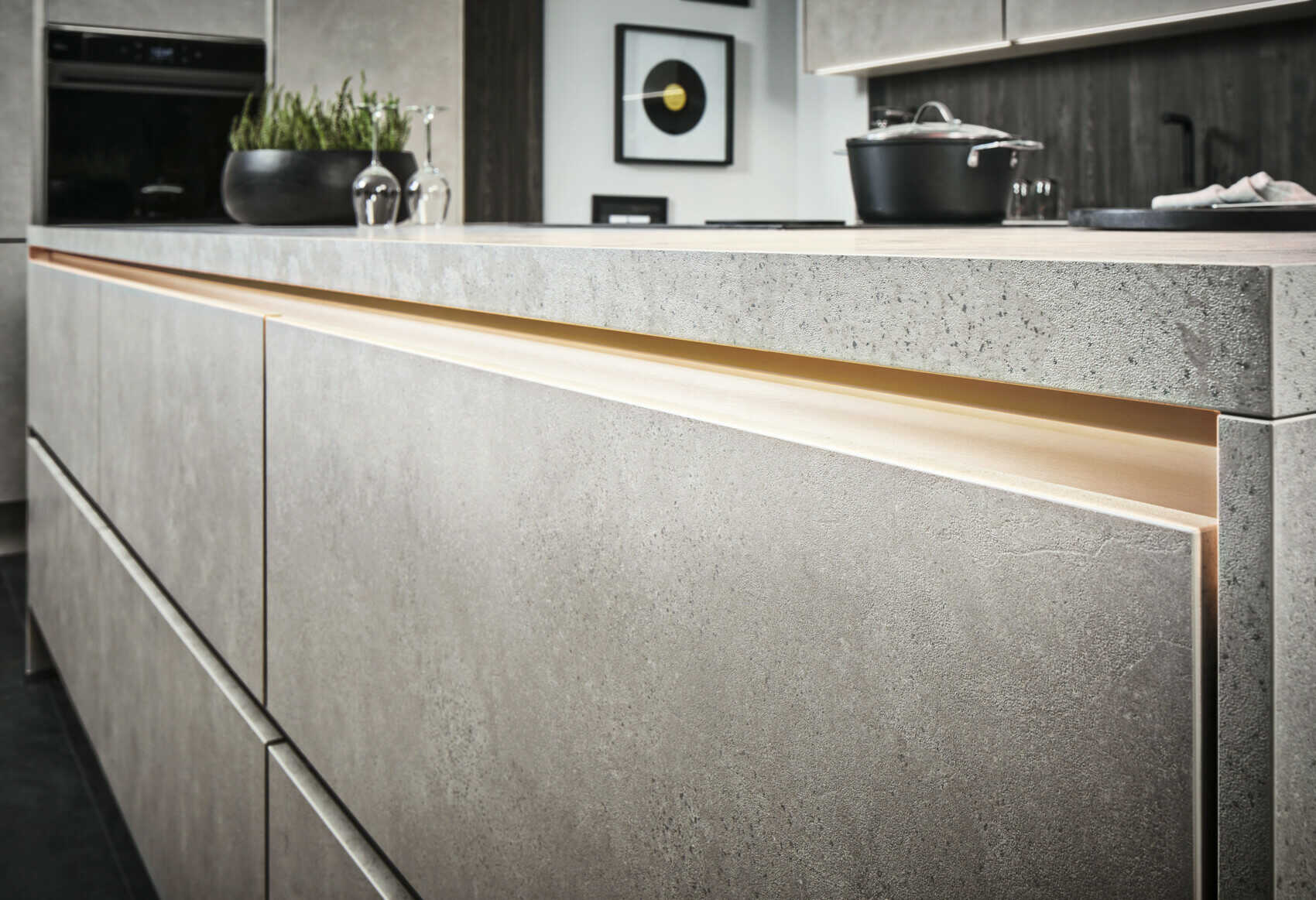
These are flush-fitting strip handles that are integrated into the edge of the cabinet doors and drawers. They lend cabinet doors and drawers a neat, minimalistic image – similar to a handle-free kitchen – perfect for modern styles.
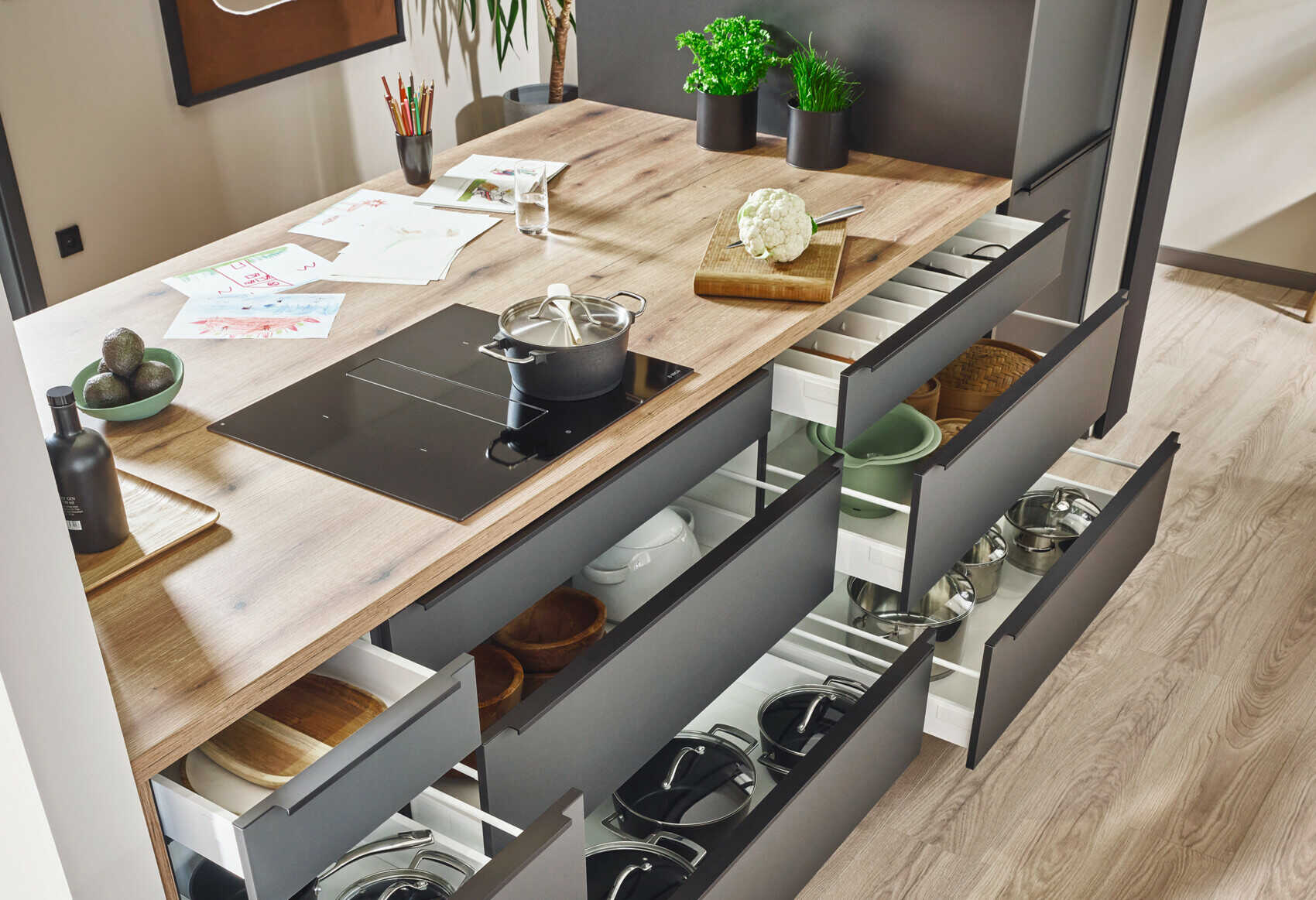
Which type of handle you choose depends on your personal taste, the style of kitchen you want to create and functional requirements. Different types of handles can also be combined to emphasise different areas of the kitchen or different functions.
Handle-free kitchen cabinets and drawers are a typical feature of modern kitchens. ‘Handle-free’ is an elegant design concept in which cabinets are opened using special mechanisms and technology, instead of visible handles.
It is important to bear in mind that handle-free cabinets and drawers may operate differently, depending on the manufacturer and the design. Handle-free kitchen cabinets often require precise planning and assembly to ensure that the mechanisms work perfectly and the overall image is aesthetically pleasing.
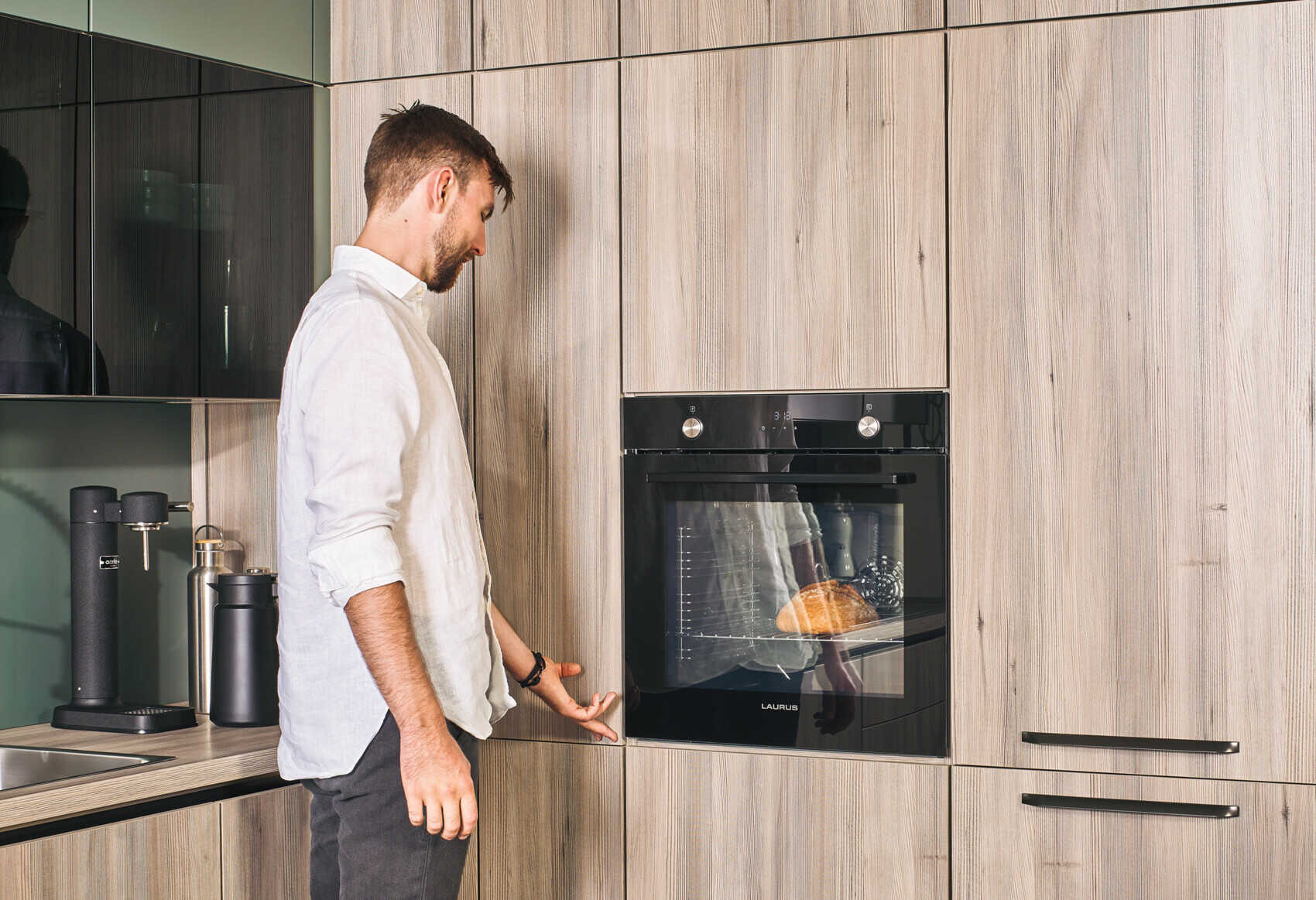
This mechanism allows cabinet doors to be opened by pushing on the surface of the door. The doors often feature a small recess or hollowed-out area that serves as a ‘handle’. Pushing this area activates the mechanism and opens the cabinet door or drawer.
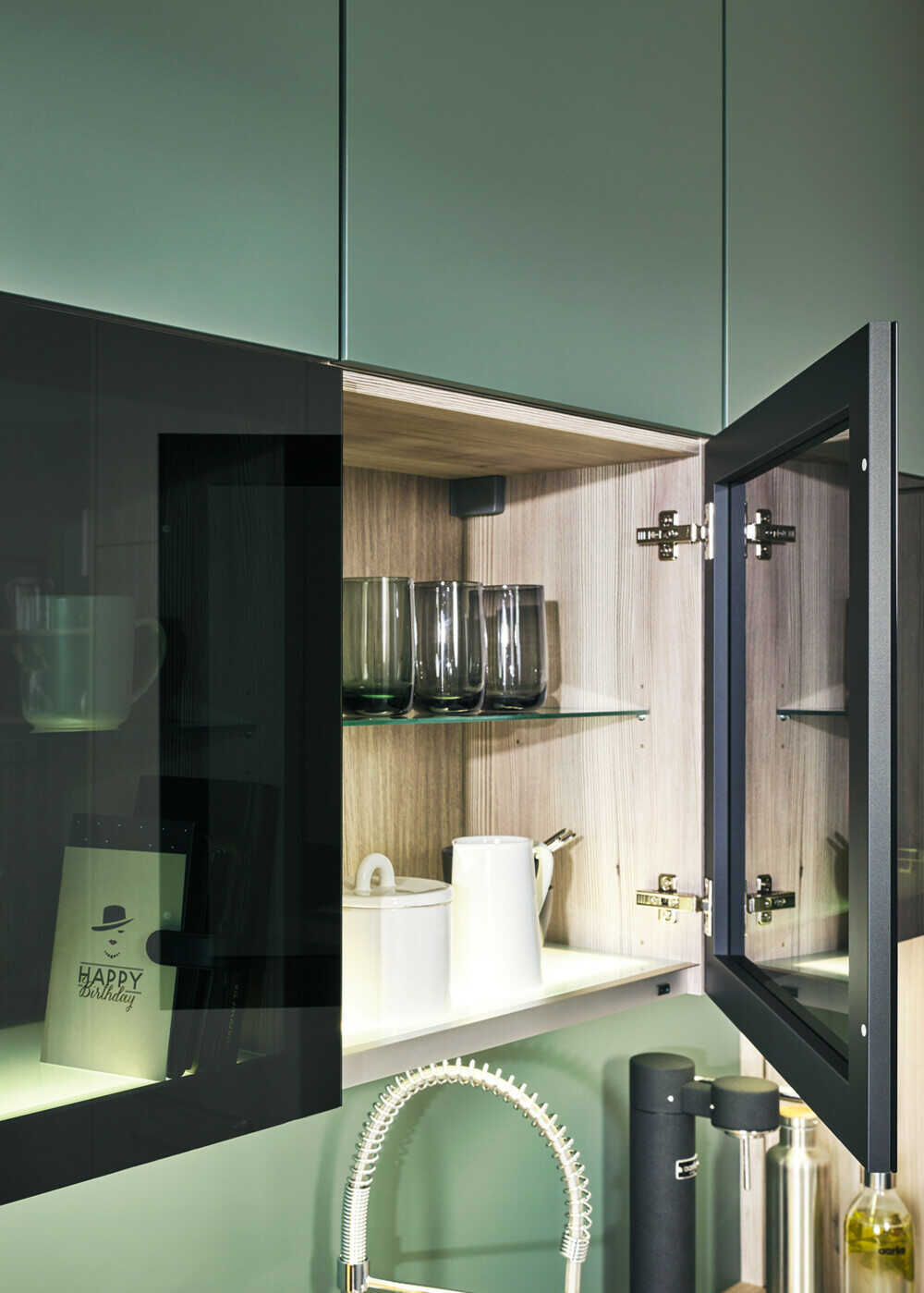
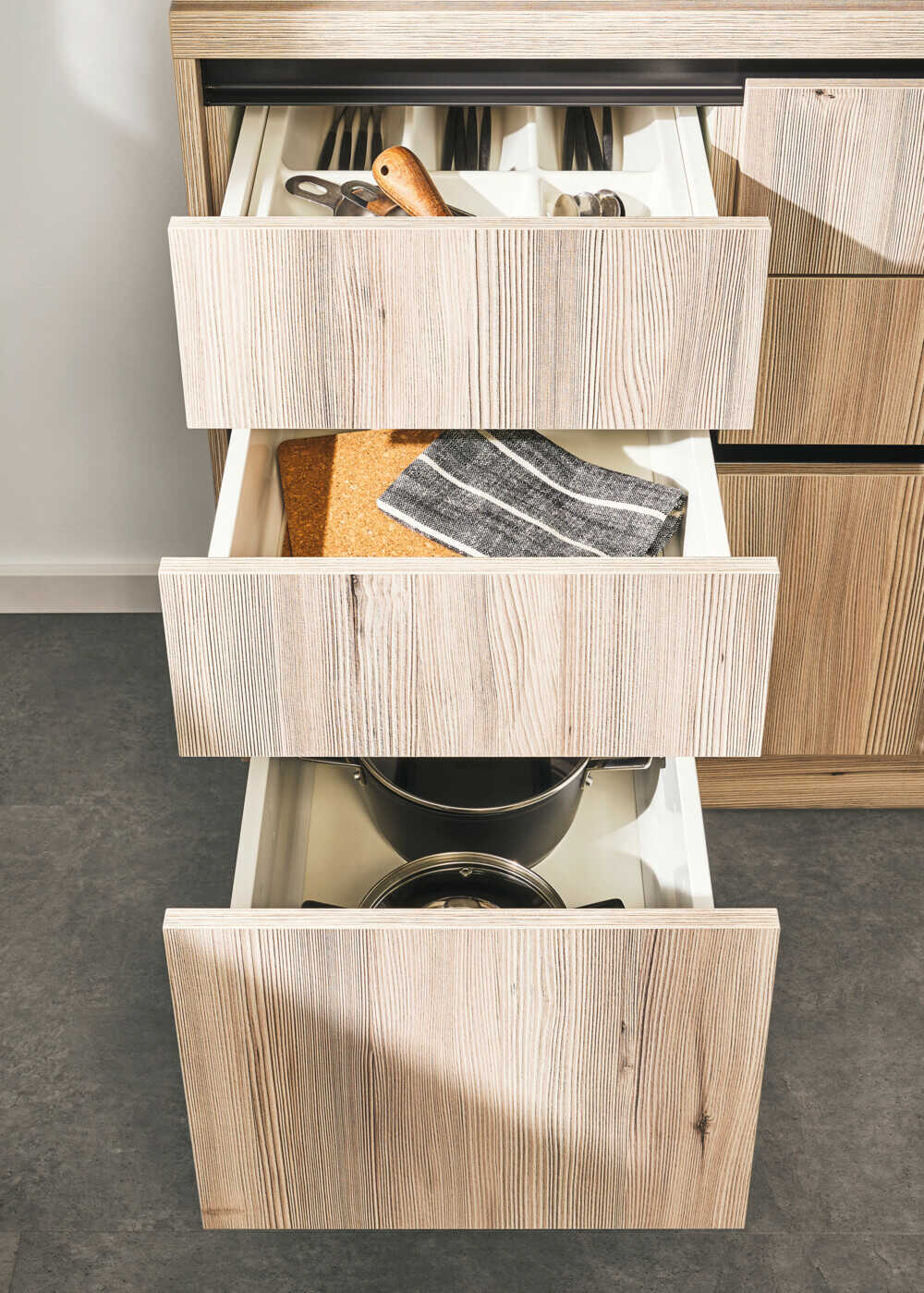
Similar to the push-to-open design, this mechanism is operated by exerting light pressure on the door. This is usually a spring-loaded mechanism that opens the door when you gently tap on it.
Deciding to go for ceramic or stainless steel-effect handles for your kitchen cabinets and drawers – or something completely different – depends on your personal tastes, aesthetic preferences and practical aspects. The following are a few pros and cons of kitchen cabinets with and without handles:
Handles are a clear and easily recognisable way of opening kitchen cabinets and drawers. This can be particularly useful when hands are wet or dirty.
Kitchen cabinets with handles often have a classic, timeless image. They can be combined easily with different types of kitchen designs, especially with traditional or rustic styles.
Cabinet handles help keep the surfaces of the fronts free from fingerprints, fat and dirt, which can mean easier cleaning and maintenance.
Handles can improve the ergonomics in a kitchen because they are a convenient feature that enables cabinets and drawers to be opened effortlessly.
Kitchen cabinet handles can impact the design of your kitchen and may not be the best fit for modern or minimalistic styles.
Handles can take up extra room, particularly in small kitchens where every centimetre counts.
Although cabinet handles can prevent the surface of the doors from getting dirty, handles can also collect dirt and dust and need to be regularly cleaned.
Handle-free kitchen cabinets look very up to date and are generally a good choice for modern, minimalistic and no-frills styles of kitchen.
Handle-free cabinets and drawers are easier to integrate seamlessly into the kitchen design, enabling an optimisation of available storage space.
The lack of handles means that there are no potential dust traps. Surfaces are also easier to clean.
The kitchen cabinets and drawers are opened in a different way than usual, e.g. by pushing or pulling in different places. Some people may be unaccustomed to this.
Fingerprints may be more visible on the surface of cabinets and drawers.
With no handles, it may be harder to instantly recognise which of the flat fronts are drawers and which are cupboards.
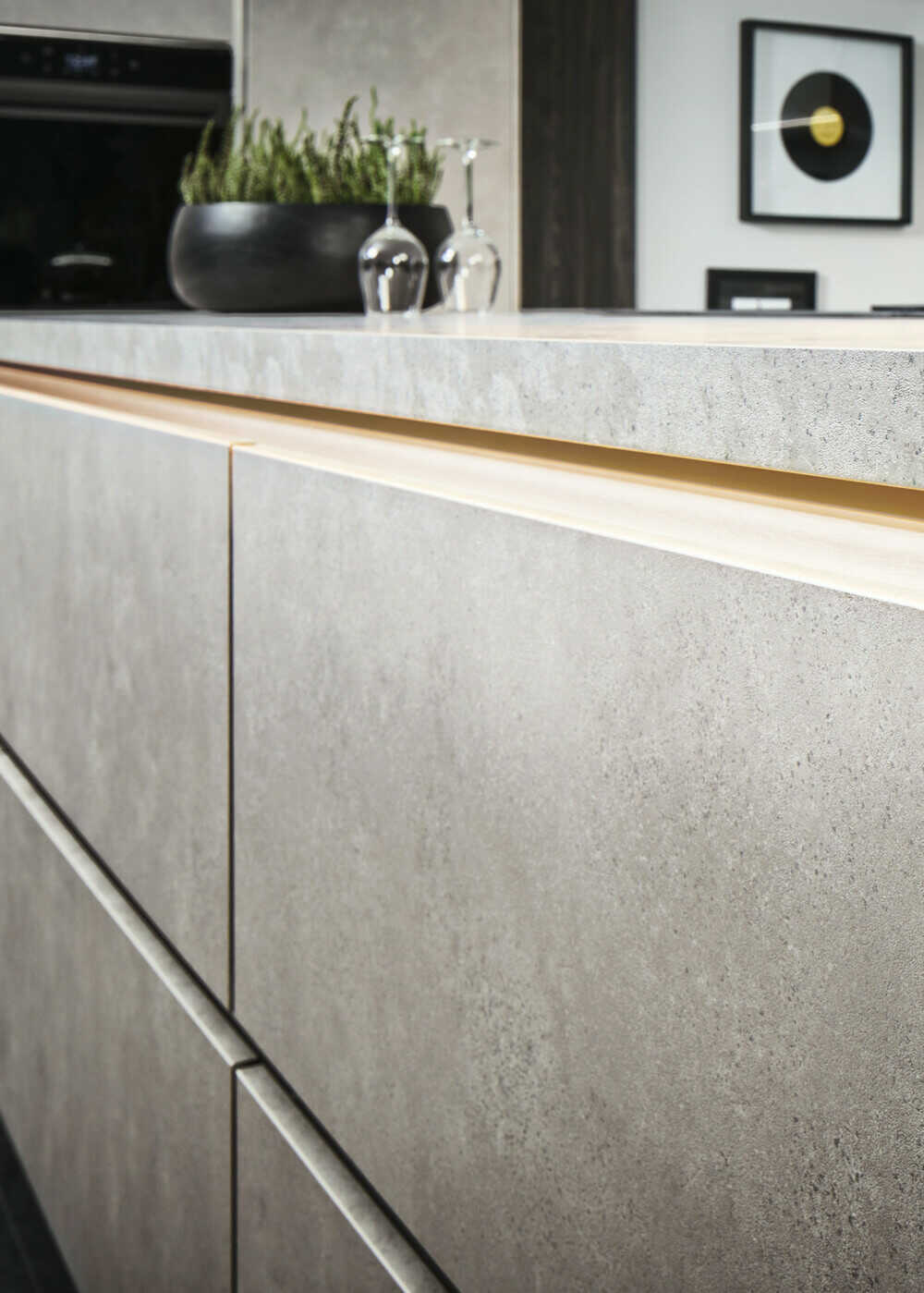
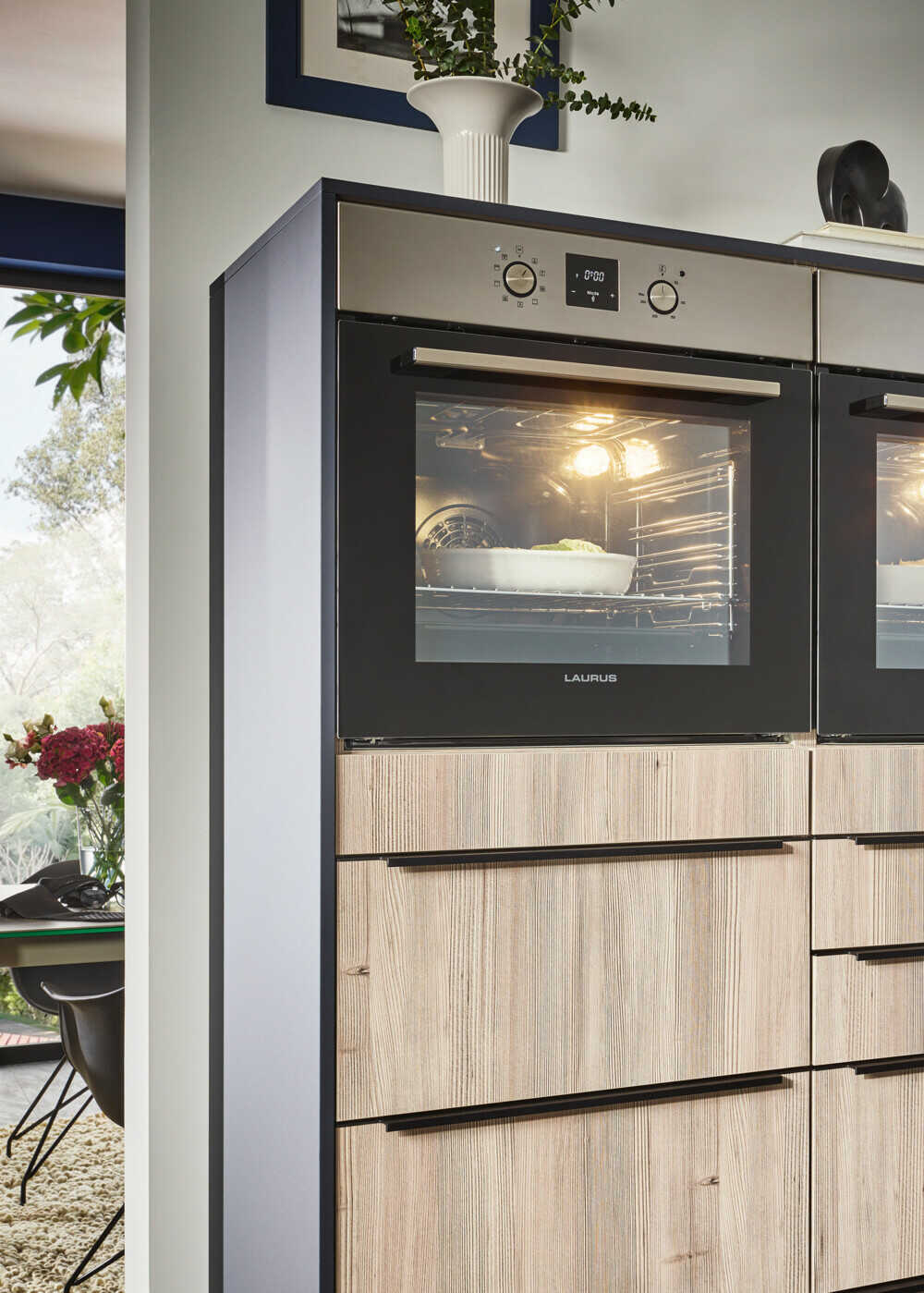
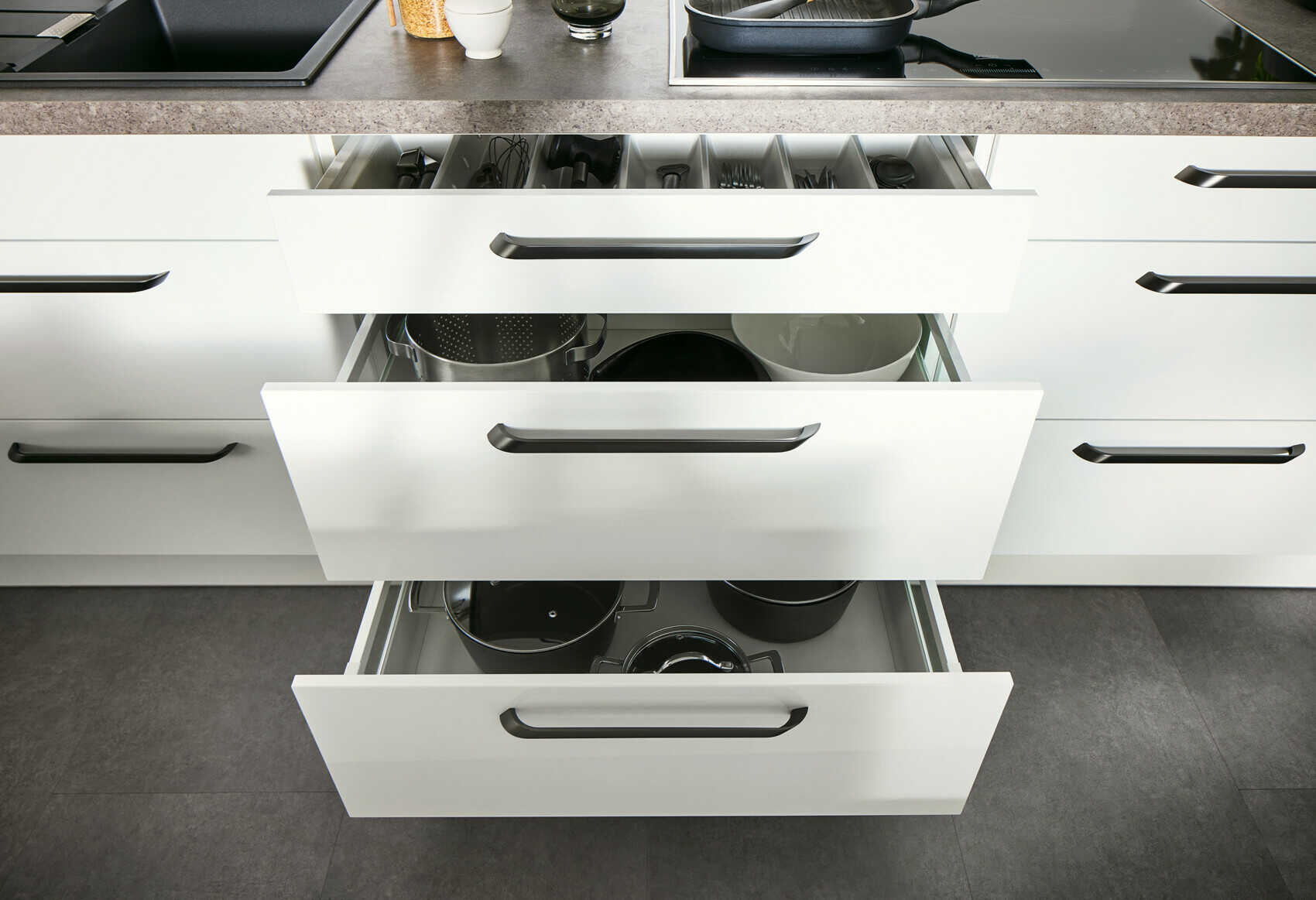
To sum up, deciding to go for cabinets with handles or a completely handle-free kitchen is a matter of personal taste and individual requirements.
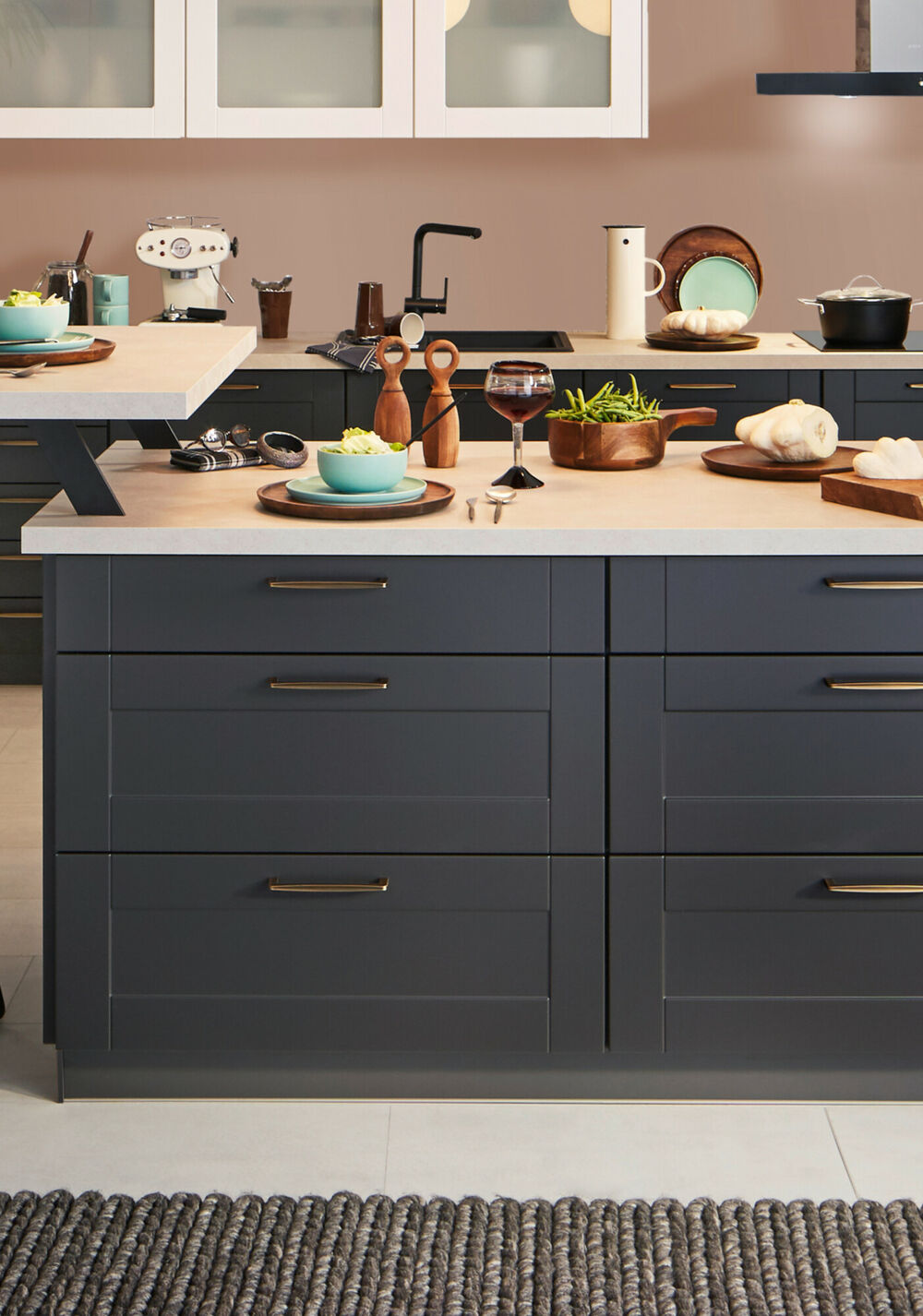
Kitchen styles
Our diverse range of kitchen styles responds to all needs and expectations. Ranging from traditional to state-of-the-art, each style of kitchen radiates its own distinctive charm.
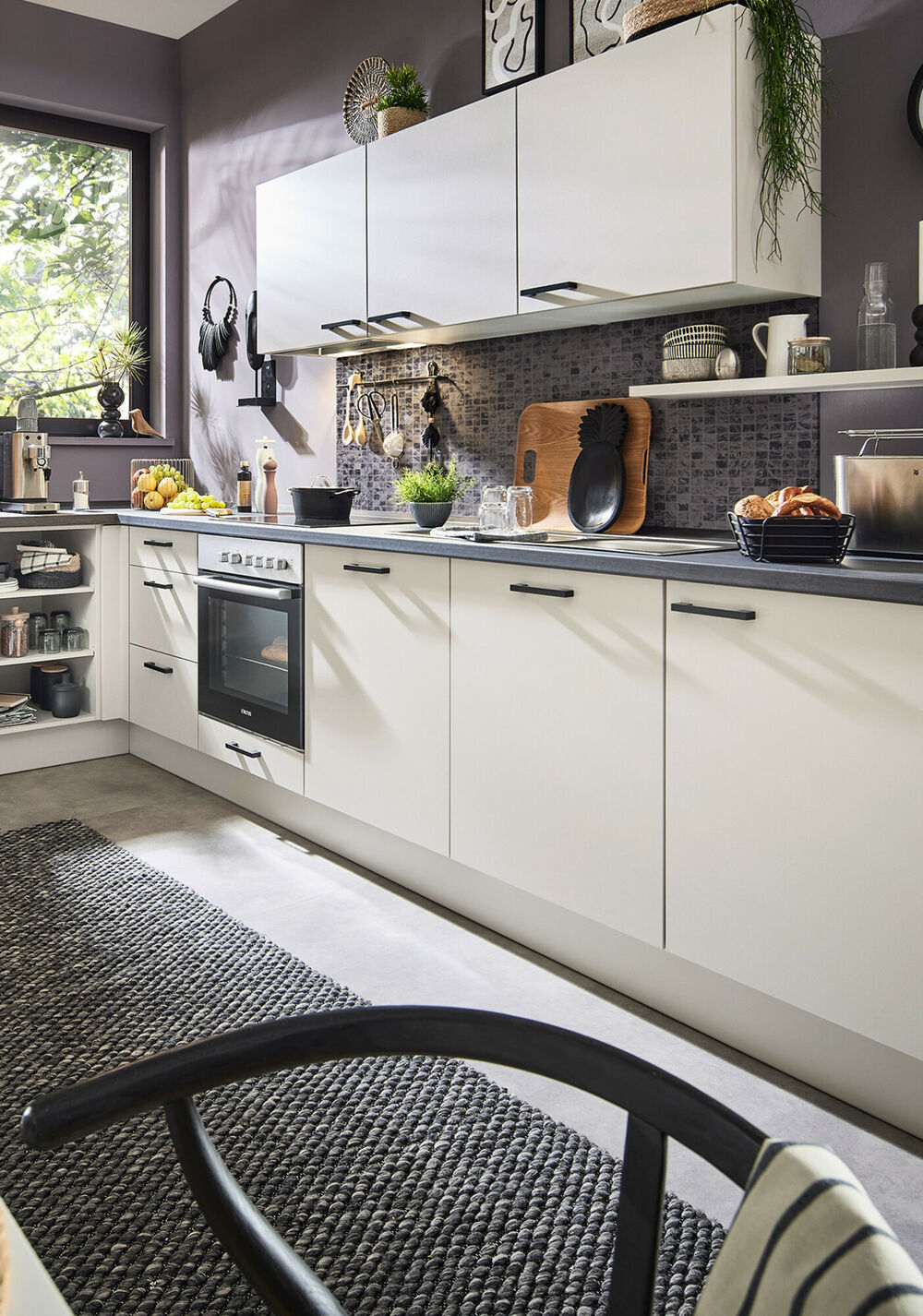
Kitchen
layouts
Check out our portfolio of different layouts for some inspirational ideas and find the perfect design for your dream kitchen.
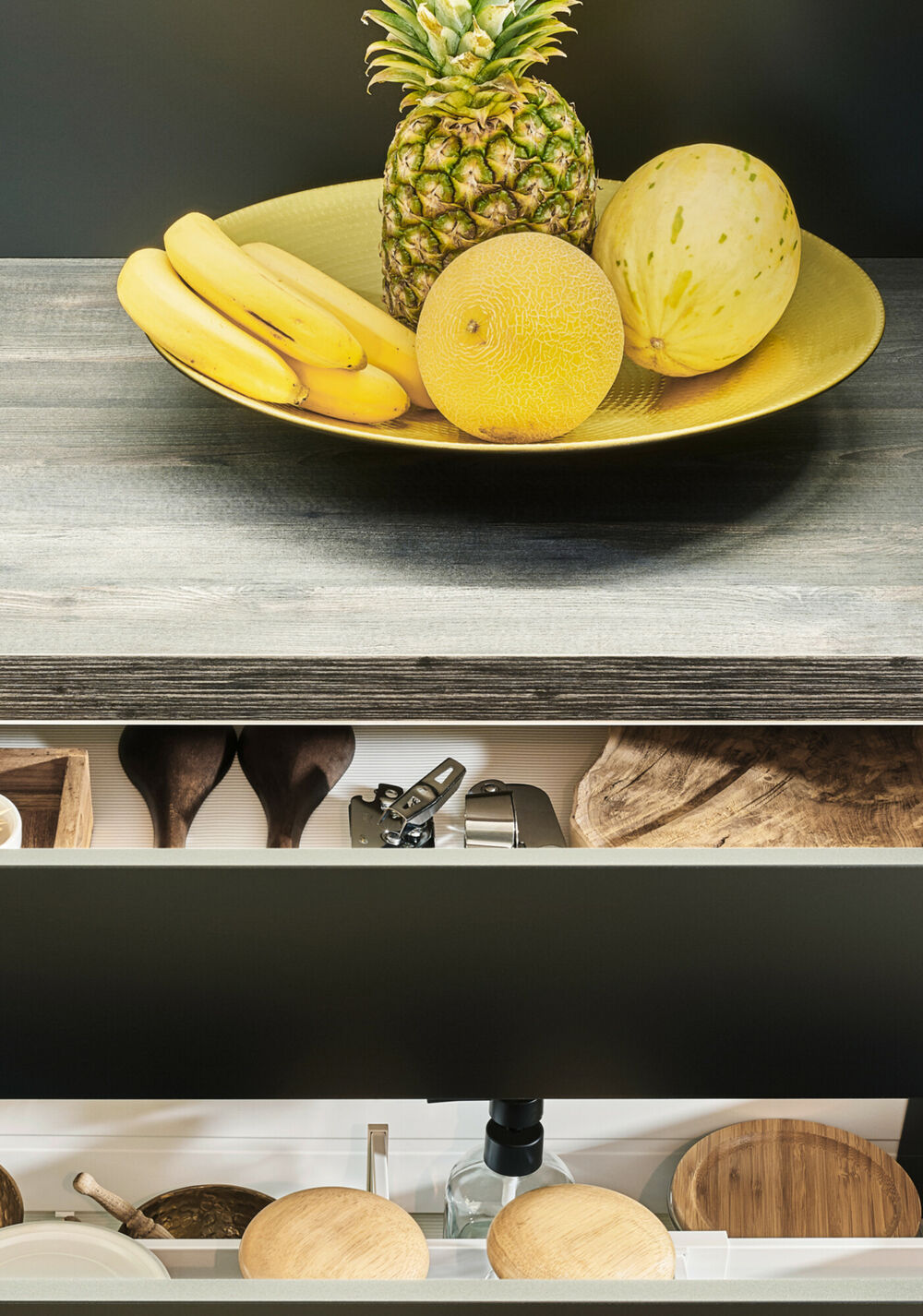
Worktops
Choose your dream worktop – one that looks the part and also lives up to the demands of your own unique lifestyle.
Plan your kitchen now. Enter your zip code to find a dealer near you.